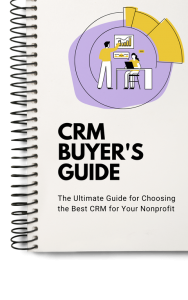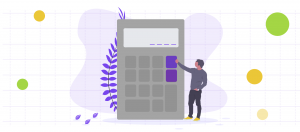Bequests 101: A Nonprofit Guide to Legacy-Giving


Among the many ways donors show long-term support to nonprofits and causes, legacy-giving vehicles like bequests are the most common path that many donors take. Bequests make up 10% of all charitable donations in the United States, and in most cases, once a donor has committed to giving a bequest to a nonprofit, they are more likely to keep donating to that nonprofit.
With this in mind, nonprofit organizations need to consider developing a bequest program that can help them attract and secure bequest donors. This program will serve as a sustainable source of revenue for these organizations and help them meet their long-term fundraising goals.
This article discusses all you need to know about bequests, how to distinguish them from a will and a traditional gift, and the steps you can take to set up a bequest program for your organization.
What is a Bequest?
A bequest is a gift made to a nonprofit organization as part of a donor’s will. This gift, which includes monetary assets, real estate properties, or other valuable items, symbolizes the donor’s commitment to the organization’s cause. It is usually a donor’s way of leaving a legacy and ensuring that the organization receives continued support.
The nonprofit can only receive this gift after the donors have passed. In their will, the donor must leave explicit instructions on how the bequest will be handed over to the nonprofits. In many cases, the asset bequeathed may be sold, and the proceeds from the sale will be given to the stated nonprofit organization.


Forecast Your 2022 Fundraising Revenue
Use this calculator to accurately forecast major gifts, grant funding from foundations, government, and corporations, as well as individual and recurring donations, and more.
What Is The Difference Between A Will And A Bequest?
A will is a legal document that states how an individual wishes to distribute their property and possessions after their death, while a bequest is a transfer of one’s tangible assets to his family members, friends, or organizations after their death.
In other words, a bequest is an act of giving, and passing on, ownership of a property to a nonprofit as described in a will. The content of the will dictates what is bequested to the beneficiary. This means a will is all-encompassing as it lists assets or properties an individual owned, including the items to be bequested, and details how each asset should be distributed.
What Is The Difference Between A Gift And A Bequest?
The terms “gift” and “bequest” both suggest a voluntary contribution is made. However, unlike a bequest, a gift is not determined by a will. Nonprofits can receive gifts while the donor is still alive, while bequests are usually only received after the donor has passed. A gift can also be anything the donor is willing to contribute to a nonprofit, but a bequest is limited to movable assets specified in a will.
What are the 6 Types of Bequests?
The arrangement of bequeathing tangible assets from a person to a nonprofit organization takes several forms or instructions.
1. General Bequests
A general bequest refers to monetary assets assigned to a nonprofit in a donor’s will. The value of a general bequest may fluctuate over time, depending on the value of the donor’s estate at the time of death. For example, if $50 million is designated in the donor’s will to be given to a nonprofit, the nonprofit might only receive $30 million if the donor’s estate value crashes to the point where $50 million may not be realizable.
2. Specific Bequests
As the term implies, a specific bequest refers to the allocation of a particular asset, such as a piece of jewelry, to a named beneficiary in a will. When nonprofit organizations are designated to receive specific bequests, the bequeathed item needs to be precisely stated. In cases where the specific bequest is listed as cash, the precise source from which the gift would come must be explicitly stated.


Find the CRM that Works for Your Nonprofit
Use this buyer’s guide to learn the best practices for researching nonprofit CRMs and fundraising tools. You will also get access to a FREE Evaluation checklist that can simplify your decision-making process.
3. Residuary Bequests
A residuary bequest involves allocating what is left over after all expenses, debts, and taxes incurred by the donor’s estate have been settled. This residuary bequest is most commonly received by nonprofit organizations. In this case, after the deceased donor’s property and possessions have been shared with their loved ones and family members, the nonprofit receives whatever is left behind.
4. Contingent Bequests
A contingent bequest is given only when specific conditions have been met. For example, a bequestor can request for their real estate property to be given to a family member only after the family member completes their university education. If the said family member decides not to enroll in a university, the property may be sold, and its proceeds will be given to a nonprofit organization. The organization receives the bequest only when these conditions have been met.
5. Demonstrative Bequests
A demonstrative bequest is a gift that must come from a specific source or fund. This type of bequest is used interchangeably with “specific bequests” due to how closely related they are. However, while demonstrative bequests focus on the specific source of the gift, specific bequests are centered on the nature of the gift.
6. Percentage bequests
The percentage bequest refers to the allocation of the donor’s estate among the beneficiaries in proportion or percentages rather than a specific monetary value. It is mainly used to ensure the estate is properly distributed amongst beneficiaries.
How to Set Up A Bequest Program for Your Nonprofit
As a planned giving vehicle, a bequest program can help your donors contribute legacy gifts to your organization. It can be a crucial source of sustainable revenue for your nonprofit. If you’re considering setting up a bequest program for your organization, here are five steps to keep in mind.
1. Get your board members’ support.
The first step to setting up your bequest program is to secure the support of your nonprofit board. This initial step is essential because so much time and resources go into setting up a successful bequest program. Your board members need to be fully aware, involved, and supportive of this new development.
2. Create a marketing plan
A good nonprofit marketing strategy is the backbone of any successful bequest program. Consider how a legacy gift can contribute to your organization’s mission. Identify the tone and craft messages that will speak to donors who are most likely to contribute. If possible, reach out to a nonprofit consultant specializing in planned giving to develop a campaign strategy.
3. Identify planned giving prospects.
Chances are there are donors in your database who may already be considering leaving a bequest for your organization. You can use Keela’s Donorsearch Integration to identify these planned giving prospects. Using wealth and other demographic data, Keela can help you find donors most likely to contribute to your bequest and planned giving program.
Identify Planned Giving Prospects with Keela
Get a glimpse of how Keela’s software helps nonprofits identify planned giving prospects, track fundraising progress, and measure success over time.
4. Create a comprehensive guide to your bequest program
Next, you can need to create a guide that details all donors and prospects need to know about your bequest and legacy-giving program. This guide can be shared publicly on your nonprofit website or via email communication. The legacy-giving page on the Canadian RedCross website is an excellent example of what to include in your guide.
5. Track the progress of your bequest program
A key aspect of setting up a bequest program is determining how to measure its success over time. You need a reporting framework that allows you to track donor engagement and giving metrics over time. With an easy-to-use, one-click dashboard, Keela’s powerful reporting and analytics tools can help you stay abreast of the progress as you develop and implement your planned giving strategy.
Legacy-giving programs that involve soliciting bequests are a great way to seek continuous support from your donors now and in the future. As more donors commit to your nonprofit’s mission and cause, you need to give them multiple options on how they can contribute to your organization. Use the tips and steps outlined in this article to develop a bequest program that works for your organization and donors.
Additional Resources on Bequests
Looking for more tips to improve your legacy-giving strategy, check out these resources:
- Planned Giving: Blow Up The Black Box
- Planned Gifts – A Complete Guide
- How to Build a Planned Giving Program That Works
- Nonprofit Glossary


